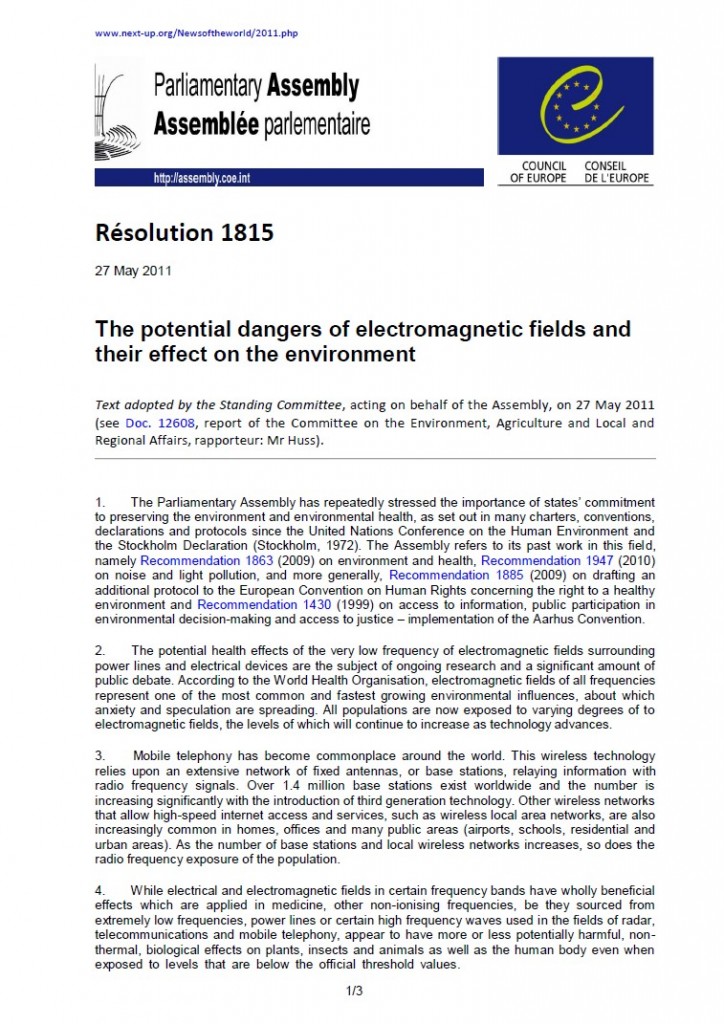Portada del sitio > Estudios Científicos > Estudio Austríaco
Estudio Austríaco
Domingo 13 de noviembre de 2005 · 1922 lecturas
MOBILE TELEPHONE BASE-STATIONS: EFFECTS ON
HEALTH AND WELLBEING
HANS-PETER HUTTER, HANNS MOSHAMMER, MICHAEL KUNDI
INSTIUTE OF ENVIRONMENTAL HEALTH, MEDICAL FACULTY,
UNIVERSITY OF VIENNA, KINDERSPITALGASSE 15, A-1095 VIENNA, AUSTRIA
Abstract
The erection of thousands of mobile telephone base-stations has raised concerns about possible health effects
caused by an exposure to electromagnetic fields. Until now, no epidemiological study has addressed this issue.
We have investigated subjective symptoms and complaints, sleep quality, and cognitive performance in a crosssectional
study in people living in urban and rural areas for more than one year in proximity to one of ten
selected base-stations.
A total of 365 subjects were included. They were investigated using computer presentation of tests and
questionnaires. Simple choice reaction tasks, memory performance and perceptional speed were measured.
Complaints and symptoms as well as sleep quality were evaluated using standardized methods. Field strengths of
high-frequency EMFs were measured in 336 households.
Total HF-EMF as well as exposure related to mobile telecommunication were far below recommended levels
(max. 1.4 mW m-2, 95.percentile 0.57 mW m-2). The proportion of inhabitants expressing strong concerns about
adverse effects of the base-stations was low (5% in rural and 10% in urban areas).
Despite influences of confounding variables, including fear of adverse effects, a significant relation to measured
power-density was found for cardiovascular symptoms and perceptual speed.
This pilot study was explorative, hence no far reaching conclusions can be drawn. However, effects on wellbeing
and performance of very low levels of exposure to emissions from base-stations cannot be ruled out and should
further be studied.
Introduction
Although there is considerable public concern about possible effects of mobile telephone base-stations on health
and wellbeing no studies on that issue have been published so far. Since the introduction of modern mobile
telecommunication in the early 1990ies exposure of the public to high-frequency electromagnetic fields (EMF)
has about doubled [1], at least in Europe. Nevertheless, it has been stated [2] that exposure to emissions from
mobile phone base-stations are not of primary interest while effects of mobile telephones themselves should be
investigated. However, there is a fundamental difference between exposure from mobile phones and their basestations
that has not been considered: while exposure to emissions from mobile phones is intermittent and
typically of short duration, those from base-stations could be 24 hours a day persisting for years. There is
presently no consensus about long-term effects of EMFs. The International Commission on Non-Ionizing
Radiation Protection (ICNIRP) declared such effects as not established [3]. Evidence in favor and against this
position is weak, because studies on that issue are scarce and some suffer from methodological deficiencies.
From a precautionary point of view, however, the evidence for long-term effects is sufficient to warrant a
thorough examination of possible effects on wellbeing and health from exposures to mobile telephone basestations.
It has been argued that if there are detrimental effects from exposures to modern telecommunication
then we should have recognized such effects earlier due to implementation of powerful radio and television
transmitters. This argument is invalid for two reasons: first of all there are only very few studies of effects from
radio and TV transmitters, ecological and cluster studies mainly on brain tumors and cancer of the hematopoetic...







